













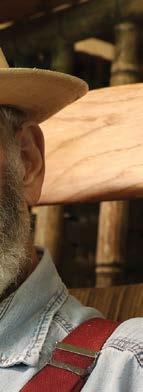


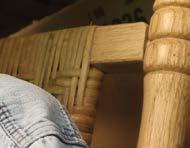
































PAR 4 IN THE



























I am a fan of Jamie Dimon and have been for many years. Dimon is the CEO and Chairman of the Board of JPMorganChase, the largest U.S. bank by assets, and when Dimon talks, the world listens. While giving an interview at the Reagan National Economic Forum in May, Dimon caused a stir with his answer to the question, “Do we need to rethink what constitutes national security?”
His answer, “We know what constitutes national security. We don’t need to be stockpiling bitcoin; we need to be stockpiling guns, bullets, tanks, planes, drones, and rare earth minerals.”
The media seized on that answer and suddenly Dimon was everywhere — on social media and the national news networks. Perhaps you have heard about or seen his comments already.
While Dimon’s answer may have been an awakening to some, it was comments he made later in the interview that really struck a nerve with me. When talking about the national deficit and what needs to be done to curtail spending, Dimon told the interviewer that there were 13,000 lobbying groups in Washington, D.C. He said 10 or 12 belonged to the banks, but the rest lobby for cotton, corn, sugar, unions, and every possible business or interest you can imagine. All of them are coming to D.C. and wanting to either start a new program or keep an existing program going. Dimon said this was damaging our country, and we need a “Reagan Type” to convince Americans that the time had come to sacrifice personal interests for the common good.
The comments made my heart sink because that is what I do, both in Jackson and D.C. I act on behalf of our electric cooperatives to ensure that they can deliver a ordable, reliable power in a manner that is environmentally conscious. Is asking that the






Rural Utility Service and Federal Emergency Management Agency (FEMA) be fully funded hurting our country? Is LIHEAP a bad program? (LIHEAP is an energy assistance program that helps low-income families pay utility bills.)
As I sat there pondering Dimon’s words, I thought about how my board would feel about me if I did not deliver on those issues. I also wondered how the clients of those 13,000 lobbyists would react to their “special interest” not being passed. My guess is they would all be unemployed. I remember our former U.S. Senator Trent Lott once famously said, “If money goes to another state, it’s called pork spending, but when it comes to Mississippi, it’s economic development.”
I asked AI what our national debt was. The answer was $36.2 trillion as of April 2025. That figure includes debt that is owed to the public (including other countries) and debt owed between government agencies. Honestly, that number is di cult for me to comprehend.
This month America will celebrate its 249th birthday. Maybe it is time that we as Americans do some soul searching and decide what is important to us. Do we continue with this current course of self interest and leave our posterity crippling debt and a bleak future? Or do we become good Americans and set aside personal interest, so our country can last another 249 years? The choice is ours to make, but our children will have to live with it.
Happy Birthday, America!


by Michael Callahan
Executive Vice President/CEO Electric Cooperatives of Mississippi







Always be cautious of unsolicited calls (or in-person visits) to your home from companies claiming to conduct energy audits. These are typically telemarketing firms that claim to be a third-party company or pose as a representative from your electric utility to gain access to homes and sell services with the promise of government rebates. Many electric utilities provide energy audit services, but they are typically scheduled at the member’s request.
Source: Better Business Bureau

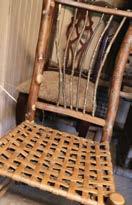



The Official Publication of the Electric Cooperatives of Mississippi
Vol. 78 No. 07
OFFICERS
Brian Hughey - President
Brian Long - First Vice President
Shawn Edmondson - Second Vice President
Brian Clark - Secretary/Treasurer
Michael Callahan - Executive Vice President/CEO
EDITORIAL STAFF
Lydia Walters - VP, Communications
Steven Ward - Editor
Chad Calcote - Creative Director
Kevin Wood - Graphic Designer
Alan Burnitt - Graphic Designer
Jill Sowell - Graphic Designer
Whitley Daughtry - Graphic Designer
Chris Alexander - Member Services Coordinator
Andy Tuccio - Media Solutions Director
Steve Temple - Social Media Director
EDITORIAL OFFICE & ADVERTISING – 601-605-8600
For delivery questions or issues, call your local co-op.
Acceptance of advertising by Today in Mississippi does not imply endorsement of the advertised product or services by the publisher or Mississippi’s electric power associations. Product satisfaction and delivery responsibility lie solely with the advertiser.
• National advertising representative: American MainStreet Publications, 800-626-1181
Circulation of this issue: 486,523
Non-member subscription price: $9.50 per year.
Today in Mississippi (ISSN 1052-2433) is published 12 times a year by Electric Cooperatives of Mississippi Inc., P.O. Box 3300, Ridgeland, MS 39158-3300, or 665 Highland Colony Parkway, Ridgeland, MS 39157. Phone 601-605-8600. Periodical postage paid at Ridgeland, MS, and additional o ce. The publisher (and/or its agent) reserves the right to refuse or edit all advertising. The magazine is published for members of subscribing co-ops. The magazine is a bene t of membership.
AND

www.facebook.com/TodayinMississippi www.todayinmississippi.com

Buc-ee’s opened its first Mississippi location on June 9 in Pass Christian to big crowds and bigger fanfare.
The Harrison County location is served by Coast Electric.
Guy Johnson, Coast Electric’s vice president of economic development and sustainability, said the cooperative is proud to provide electric power to the state’s first Buc-ee’s.
“Part of our mission as a local electric cooperative is to support economic development in our community. Buc-ee’s has already had a positive impact on our local economy, creating hundreds of jobs and increasing sales tax revenue in our area. We will work with Buc-ee’s representatives to ensure they, and their millions of guests, will receive reliable service from Coast Electric,” Johnson told Today in Mississippi.
“Part of our commitment to the project is constructing a new substation to serve Buc-ee’s and the anticipated additional load that will come as a result of their new location in our service area.”
The new store is approximately 74,000 square-feet and features 120 gas pumps.
More than 1,000 fans attended the grand opening, according to the Clarion Ledger.
The new Buc-ee’s is located o Interstate 10 at the Menge Avenue exit in Pass Christian.




Grand Gulf Nuclear Station, Mississippi’s first and only nuclear power plant, turns 40 this year.
In 1980, South Mississippi Electric Power Association — known today as Cooperative Energy — acquired a 10% undivided ownership stake in the Port Gibson-area power plant. The remaining 90% is owned and operated by Entergy subsidiary, System Energy Resources, Inc.
Under the partnership, Cooperative Energy funded 10% of the plant’s construction costs and covered the same amount of its operating and manufacturing expenses and future decommissioning costs. In exchange, Cooperative Energy garners 10% of the electric power generated by the plant.
“For four decades, Grand Gulf has grown into a regional powerhouse, providing safe, clean, carbon-free, a ordable energy while serving as one of the largest non-carbon emitting power plants in the world,” said Mark Smith, senior vice president of power generation at Cooperative Energy.
“In other words, the qualities that made Grand Gulf a sound investment in the 1970s are the same ones that continue providing benefits for Mississippi communities and the environment today.”
About 40,000 tons of reinforced steel and 460,000 cubic yards of concrete were used to build Grand Gulf Nuclear Station. Crews broke ground on the plant in 1974.
Cooperative Energy, based in Hattiesburg, is a generation and transmission electric cooperative that provides power to 11 distribution electric cooperatives around the state — Coahoma Electric, Delta Electric, Twin County Electric, Yazoo Valley Electric, Southern Pine Electric, Dixie Electric, Southwest Electric, Magnolia Electric, Pearl River Vally Electric, Coast Electric, and Singing River Electric.












Yellow-blooming plants bring a bright, cheerful energy to my garden. There’s something about that bold splash of golden color that lifts the spirit and catches the eye, especially after the gray tones of winter.
In Grenada, Devo and Rosemary Lancaster have a couple of showstopping yellow bloomers in their landscape.
The first is the Lady Banks’ Rose, known scientifically as Rosa banksiae. It is an old-fashioned climber with timeless charm and exceptional resistance to pests and diseases. This vigorous, rambling rose is nearly thornless, making it easy to train over fences, arbors, or trellises.






The rose blooms range from semi-double to fully double, and their sheer number creates the illusion of a golden waterfall spilling down the garden structure. These have a delicate, sweet fragrance and completely transform the plant for a few glorious weeks with their abundant blooms.
Yellow-blooming plants bring a bright, cheerful energy to my garden. There’s something about that bold splash of golden color that lifts the spirit and catches the eye, especially after the gray tones of winter.
As spring settles in, Lady Banks puts on one of the most breathtaking floral displays I’ve ever seen. In early to mid-spring, the long canes are smothered in clusters of soft yellow blossoms, each about an inch across.
Lady Banks is relatively low maintenance once established. It thrives in full sun but tolerates light shade, especially in hot Southern gardens. Well-draining soil is a must, and a layer of mulch around the base helps retain moisture and regulate soil temperature.
You can give this rose a light pruning after it blooms to shape the plant and remove any dead wood, but this is not necessary. In Mississippi, it holds its deep green, glossy foliage nearly yearround, providing a lush backdrop for other plants, even when it’s not in bloom.









Another standout I saw is the Lancasters’ Japanese Rose plants, which are known scientifically as Kerria japonica. These graceful and adaptable shrubs bring a completely di erent but equally delightful presence to the garden.
Japanese Rose plants have elegant, arching stems that create soft, fountain-like form. In early to mid-spring, they are covered with bright, golden-yellow double flowers that look like tiny pom-poms or ru ed miniature roses. Each bloom measures about 1 to 2 inches across and glows against the fresh green foliage.
This plant thrives when planted in partial shade, making it useful where other plants struggle, like under trees, along woodland edges, or in mixed borders with dappled light. Its slender green stems remain eye-catching in winter, adding structure and color to the dormant landscape when most plants fade into the background.
Japanese Rose is a hardy and low-fuss shrub that thrives in average, well-drained soil. It is especially tolerant of shade, drought, and even some neglect. Rejuvenate it by pruning it hard every few years right after flowering to encourage fresh growth and more blooms the following season. Both of these yellow bloomers bring brightness to the spring garden. Their glowing flowers, graceful growth habits, and reliable nature make them standout plants in the landscape.

by Dr. Eddie Smith
Southern Gardening columnist Dr. Eddie Smith, a gardening specialist and Pearl River County coordinator with the Mississippi State University Extension Service, is an internationally certified arborist, Produce Safety Alliance certified trainer, and one of the developers of the Mississippi Smart Landscapes program that encourages the use of native plants in the landscape.








On sweltering summer evenings, bellowing beasts wait on dark, swampy shorelines ready to pounce on anything that might venture too close.
These vicious, gluttonous predators swallow whatever fits into their cavernous mouths. They will prey on those almost their same size. They even eat their own family members and can jump more than 10 times their own length.
Fortunately, these predators don’t grow more than about two feet long with their powerful legs extended and might weigh about 1.5 pounds. Not counting their legs, bullfrogs grow to about five to nine inches long. Their slightly smaller cousins, pig or lagoon frogs, grow to about 5.5 inches long. Bullfrogs and pig frogs look similar. Pig frogs have narrower, pointed snouts and bullfrogs look more rounded. A white lateral stripe through the rear and middle of each thigh also distinguish pig frogs.
A smaller cousin, bronze frogs also occur throughout Mississippi. They look similar to the others, but only grow to about four inches
from snout to tail. Many people misidentify them as juvenile bullfrogs or pig frogs.
Practically all Mississippi swamps, lake and river shorelines, or other wetlands provide excellent habitat for the sonorous amphibians. Bullfrogs live throughout the state. Pig frogs generally range south of Hattiesburg.
Frogs usually turn more active on hot summer nights. They pick good spots in thick weeds or on shorelines, waiting for prey to pass close enough to snatch. They regularly bellow out their calls, giving away their positions.
Most people hunt frogs by boat. One person drives, cruising slowly along lake and river shorelines. Others in the boat shine lights to watch for frogs. The hunters scan shorelines, lily pad patches, weed beds, and other hiding spots.
When a light beam illuminates a frog, its white chin and eyes typically shine like two dots hovering over a bright cottony throat splotch. The light in its eyes temporarily stuns the normally wary frog so it freezes, allowing people to approach close enough to catch it.
Some people use nets or gigs to catch frogs. Others prefer mechanical “frog grabbers.” Some people choose to sneak close to frogs and grab them by hand. Before grabbing anything at night by hand, look around closely because other things, like snakes, alligators, or snapping turtles, might also want to catch that frog.
Although most sportsmen hunt amphibians by boat, froggers on foot can still jump into action. Ponds, stream shorelines, roadside ditches, small irrigation, or drainage canals and similar places make great places to hunt frogs on foot. Frogs thrive in the tiniest places as long as they remain reasonably wet with some access to dry ground or structure.
When frogging on foot, work in teams. Each person walks along a di erent side of the waterway. After spotting a frog, one person shines the light into its eyes while the other sneaks up from behind to catch the frog.
Hunting frogs on hot summer evenings creates great memories and can provide delicious meals. The tradition of eating sumptuous fried frog legs goes back centuries.

by John N. Felsher
John N. Felsher is a professional freelance writer, broadcaster, photographer, and editor who lives in Alabama. An avid sportsman, he’s written more than 3,300 articles for more than 170 different magazines on a wide variety of outdoors topics.Contact him at j.felsher@hotmail.com.


Frogs usually turn more active on hot summer nights. They pick good spots in thick weeds or on shorelines, waiting for prey to pass close enough to snatch. They regularly bellow out their calls, giving away their positions.



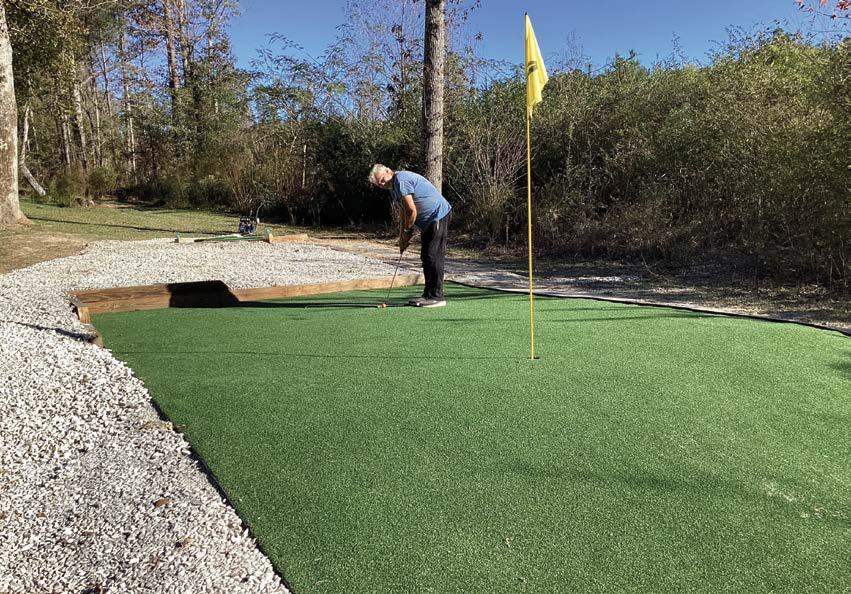









by John N. Felsher
Many people dream of retiring and moving close to a golf course, so they can play their beloved game as often as possible. One Mississippi man brought the course to himself.
Don Adsitt lived in Washington state and worked as a senior computer network engineer for a large company. He retired in 2024. He and his wife, Miriam, bought three acres near Carthage and headed to Mississippi.
“I wanted a place in the country with a garage, and we decided Mississippi was a good place to retire,” Don said. “Mississippi people are the nicest people. When we first came here and met our neighbors, we had the greatest feeling of community. When we backed in the moving van, nine neighbors came over. That’s Southern hospitality.”
In Washington, Don owned a third of an acre and put in a little golf course on that property. Now, with more acreage in Mississippi, he decided to go bigger.
A company wanted to charge $10,000 per hole, or $90,000 plus tax, to build nine holes. Don believed he could do the work himself


for much less and started planning his backyard course. In late November 2024, he began work on the Walking Possum Back Yard Golf Course.
“With us retiring, I needed a way to stay fit,” Don explained. “I thought golf would be the best way to get exercise. First, I had to mark out the distances and where the placement of the greens would be. I bought nine flags and planted them in the grass. I hit balls back and forth to see how they would work. Everything seemed to be fine on how I wanted to lay it out.”
He wanted real greens instead of artificial ones. On the internet, he found some instructive material on how to make real greens. For his first green, he put down gravel layers, smoothed the surface, and put the green down.
“That went well, but it was very time consuming and quite expensive,” he said. “For the second green, I decided to do something that I saw on the internet. I bought an underlayment about three feet square used for patio bricks. It’s a half-inch thick of expanded polyurethane.”

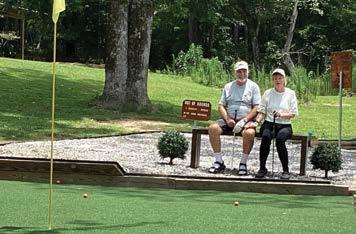

I


wanted a place in the country with a garage, and we decided Mississippi was a good place to retire. Mississippi people are the nicest people. When we first came here and met our neighbors, we had the greatest feeling of community.
Don placed the material where he wanted it and stapled everything into the ground. Then, he put artificial greens on top and nailed down the edges. That worked and now everything looks just like a regular course.
“The course is designed around a 50% weighted ball, which is the same size as a regular ball,” Don said. “These practice balls hit the same as a real ball, but only go half the distance. We use these practice balls instead of real golf balls as a safety issue.”
Working mostly alone, but with some help from his neighbor Phillip May, Don finished his course in about six months for around $18,000. Rain and wintery conditions halted work on some days.


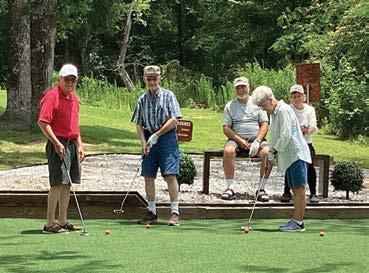

“All our neighbors play,” Don said. “It is free to anyone in Carthage, 6 years old or older. We have a driving range out front and a fairway for every green. The longest hole is about 180 yards. That’s equivalent to about 500 yards on a real golf course. Most of the holes are about 130 to 140 yards. One hole is a Par 3. Every other hole is a Par 4. The holes are challenging. The fairways are narrow. Some of them are through the trees. One is on a little slope, so it’s a challenging place to play.”


https://tinyurl.com/26xyk53x
For more information about the course, email Don at Donaldadsitt@gmail.com.
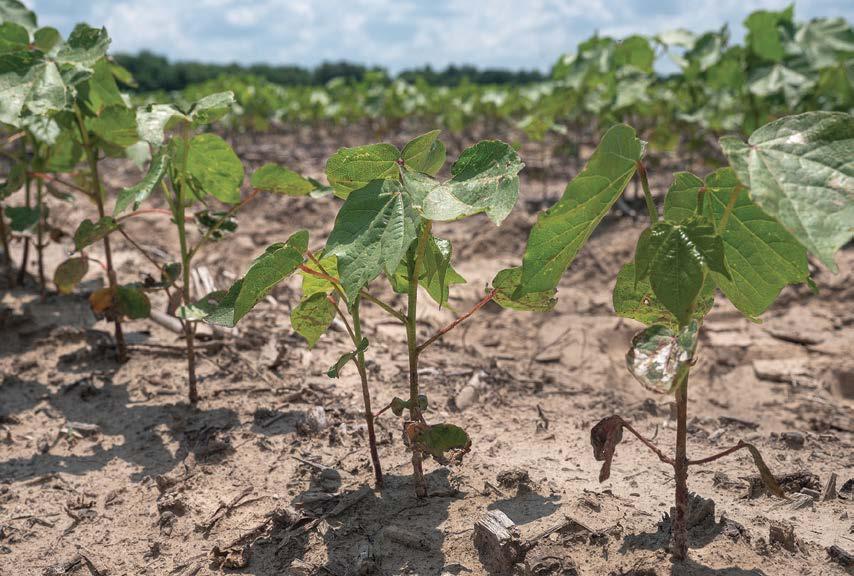
by Robert Nathan Gregory – MSU Extension Service
Expect to see significantly less cotton than usual blooming in Mississippi later this year.
Row crop growers in the state had already indicated scaling back cotton acreage by 30% when they locked in their planting intentions for 2025, anticipating planting about 360,000 acres. That was before consistent rain through much of May -- the crop’s primary planting window in Mississippi — kept planters out of fields.
The latest crop progress and condition report from the U.S. Department of Agriculture for the state shows only 54% of the crop had been planted as of June 2 compared to 89% by that time last year.
“Planting conditions for cotton this year have been possibly the worst I’ve ever seen,” said Brian Pieralisi, cotton specialist with the Mississippi State University Extension Service. “It’s hard to say how much is planted so far, but I can believe it’s less than half the intended acreage.”
Favorable weather in April allowed for early planting, but some acres planted in cotton became stunted by excess rainfall.
“It’s been tricky,” said Pieralisi. “Some regions had more planting windows than others. Most of the Delta was able to get intended acres planted. Some of the eastern and central Delta was wet, and the Black Prairie and northeast Mississippi have been wet most, if not all, of May.”
John Michael Blankenship, MSU Extension agriculture agent in Bolivar County, reported at least four farms there with prevented planting acreage and numerous waterlogged, unplanted fields. Prevented planting refers to financial protection provided to growers after a failure to plant an insured crop by its final planting date due to flooding or drought.
“You should have cotton planted or be at a good stopping point by the end of May for it to have enough time to develop,” Blankenship said. “We’ve had more than 10 inches of rain in the last two or three weeks, and that makes it impossible to get anything out in the field. Any relief we see now may be too little, too late for cotton, and growers planting late will have to plant what they can.”
The majority of acreage for other row crops in Mississippi is in much better shape. Virtually all the state’s corn has been planted, with more than 70% in either good or excellent condition, according to the weekly USDA progress report. Those two categories also describe more than 60% of the rice crop, with none of it graded below fair. The crop was around 90% planted as of June 2.
“This year, our growers had their seed and planters ready, and there was a mad rush at the beginning of the season to plant as quickly as possible,” Blankenship said. “While cotton has been hung up for the most part, the growers that hit their target planting dates for other row crops are satisfied right now with how their crop is looking. Early planted corn is coming on strong.”
This also largely applies to soybeans — the state’s most grown row crop and the one that can be planted latest in the year. That crop’s planting progress has just passed 80%, and 71% of what’s in the ground is in either good or excellent condition.
MSU Extension soybean specialist Justin Calhoun said while this year has been a tough one to lock in an accurate acreage estimate, he believed the final total would land close to the 2.25 million acres the USDA forecasted in March.
“Soybeans tend to be the most adaptable to plant date of any of our crops. We have optimum windows for maximum yield

This year, our growers had their seed and planters ready, and there was a mad rush at the beginning of the season to plant as quickly as possible. While cotton has been hung up for the most part, the growers that hit their target planting dates for other row crops are satisfied right now with how their crop is looking.
potential, but even if you fall before or after that optimum window, you’ll still make a decent crop if the conditions are right,” Calhoun said.
Calhoun said there were areas of the state that were dry enough to capitalize on a very early planting window around the last few days of March that extended into nearly the first half of April.
“The soybeans in that window have benefited from the rains and look fantastic,” he said. “Since that second week of April, which is usually when the bulk of our planting gets going, the rain has been persistent across the state and has delayed planting quite a bit. The majority of the Delta region is planted, but it has all gone in sporadically during dry windows, and there are still a few acres out there still waiting to dry out to be planted.”
In the eastern portion of the state where rains have been much more consistent, very few dry windows have occurred, causing major delays in the planting progress.
“It’s no doubt that the majority of the 25% of the state’s acres that are left to plant are located on the eastern side,” Calhoun said.















• Rate schedule is based on your current age and is guaranteed for the life of the policy.
• Monthly rates as low as $3.49.
• Coverage is also available for your spouse and other family members.
• Benefits will NEVER be canceled or reduced for the life of the policy if premiums are paid on time.
Policy Form #SRTCV/SRTCV R13 or R17, or #SRTCV90MA in MA
• Rates are based on your children’s or grandchildren’s present age and never increase for any reason.
• Monthly rates as low as $2.17.
• Benefits will NEVER be reduced or canceled if premiums are paid on time.
• Give your children a financial head start right now. Your policy builds CASH VALUE for your family’s needs.
Policy Form #GWL2001 or GWLA001



















The world lost a music icon when Sly Stone died earlier in June. Among my favorites was his hit, “Hot Fun in the Summertime”. Those days are definitely here as the trend of increasingly hot summers continue.
Take measures during this time of extreme heat to conserve energy when able. Be careful when spending time outside. While supply chain and high costs are a challenge, Northcentral will continue maintain our system in a manner to ensure reliability.
Reliability has and will continue to be the hot topic. Through Northcentral’s valued partnership with TVA, we have been able to handle the challenges of summer heat. Other challenges present themselves, however. Data centers, AI, and cryptocurrency mining are just part of an electrification trend we are seeing in the United States. New load growth is predicted to exceed 15% by 2030. This load growth must have new electricity generation resources to meet this demand. Our federal government has worked to remove some restrictions that hinder generation development but has also created new ones. Our federal administration has removed four






members of the TVA Board of Directors in the last three months. This places the board below a quorum and unable to vote on new generation projects. This makes it di cult for TVA to operate in an independent manner.
Northcentral and other electric cooperatives will work with our elected o cials to have qualified directors nominated and approved — directors who are knowledgeable as to the needs of the Valley and those in it. While seeing a dynamic explosion in electricity needs through technology and increased manufacturing, we can’t a ord to pump the brakes.
Stay safe.

by Kevin Doddridge General Manager/CEO












observe
Day, and our o ce will be closed Friday, July 4, for the
Northcentral Electric Cooperative is proud to announce that Jared Rumfelt, right-of-way coordinator, has completed the requirements of Leadership DeSoto. Jared was one of 27 others who graduated from the program on May 9 at Whispering Woods Conference Center.
Leadership DeSoto is coordinated by the DeSoto County Economic Development Council and gives participants a comprehensive look at the needs and challenges facing the county — while encouraging them to take an active role in its future.
Candidates are nominated by organizations, employers, or individuals and must complete a lengthy application process. A selection committee then chooses participants based on their community involvement, leadership capabilities, and potential in their respective fields.
Leadership DeSoto is a seven-month program that gives participants insight into community resources through sessions on leadership, economics, education, legislation, health care, local government, and community service.
Over the course of the program, Jared saw firsthand the diversity and complexity of DeSoto County — from its infrastructure and institutions to the very real needs of its underserved communities.
Program participants were placed into teams to work on projects that impact the county. Rumfelt and team partnered with the Olive Branch Food Pantry for their community service project. Though he had passed the pantry for years, he said he had never really noticed it until now. “Now I can’t drive past it without thinking about it and wondering what I can do to provide some type of service to them,” he said. The group volunteered their time, raised money, and held food drives to support the pantry and its mission.
Leadership DeSoto not only broadened Jared’s view of his community but also deepened his appreciation for the people in it. “There’s a lot of smart people; there’s a lot of good people; there’s a lot of people that are willing to go the extra mile to help those in need and serve their community,” he reflected.
When asked what leadership skill he’s taking with him from the experience, Rumfelt didn’t hesitate: “Compassion. This program brings out a personal element of serving and just being compassionate for others.”
At Northcentral, we’re proud to celebrate employees like Jared who embody our mission both on the job and out in the community.
If you would like more information on Leadership DeSoto, please visit desotocounty.com.










































































Donate July 9-31 for a chance to win a car. You could be the lucky donor randomly selected as the winner of up to $30,000 toward the purchase of your sweet, new ride!* Book your appointment today.
Make an appointment online or call 877-25-VITAL
Location: Auditorium
4600 Northcentral Way Olive Branch, MS 38654
Date: July 15, 2025
Time: 12pm - 4pm
Ever wonder how you can help a Mother, Cancer or Sickle Cell patient!
Donate today whole blood, red blood cells, plasma, platelets needed daily!
To schedule an appointment, visit donors.vitalant.org and use code: northcentralelectric or Use QR code
Don’t forget to bring a photo I D ~ eat well and drink plenty of water!
*Terms and condition apply; see vitalant.org/CarGiveaway




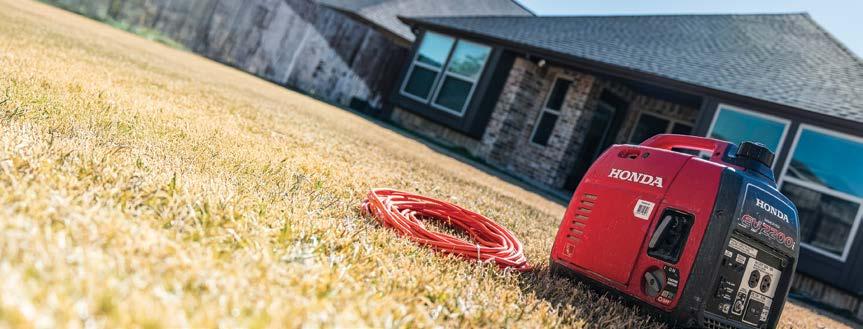




by Scott Flood
Don’t generate problems with your backup generator.
The wind howls outside your windows as a major storm system blows through the area in the late evening. Your lights flicker for a moment or two before you’re plunged into darkness.
Fortunately, you had the foresight to buy a backup generator big enough to handle your refrigerator, freezer, and other key needs.
Mississippi’s electric cooperatives understand power outages are a major inconvenience, and we do our best to prevent them. But when severe weather rolls through, outages can sometimes stretch into several hours or even days after a major storm. Lineworkers may have to check many miles of power lines to pinpoint the problems before they can begin their work to restore service. That’s why many co-op members consider buying backup generators to provide for their family’s needs while waiting for service to resume.
Backup generators fall into one of two categories. Standby generators are permanently wired into the home’s electrical system by a qualified electrician. Portable generators, as the name implies, can be moved to wherever they are needed. Because they’re small enough to move, they generally provide less power than standby models.
Some homeowners make the mistake of plugging their backup generators directly into a wall outlet or connect them to their home’s electrical panel. Beyond the significant risk of electrocution and fire that can create, plugging generators directly into your outlets can send the voltage your generator creates into the power lines connecting your home to the electric grid. That creates a dangerous condition called “backfeed,” which can seriously injure the lineworkers who are working so hard to restore your electricity, as well as anyone who accidentally comes in contact with power lines.
That’s why permanently installed backup generators are required to have what’s known as a transfer switch, which should be installed by a qualified electrician. The transfer switch creates a barrier between your home’s electrical system and the outside wires, so backfeed cannot occur. When the transfer switch senses that power has been restored, it switches the power from the generator back to the outside lines.
The biggest danger associated with backup generators is one that’s both invisible, odorless, and deadly. Because backup generators burn fossil fuels, they generate a variety of gases, most notably carbon monoxide. The agency reports that nearly 100 Americans lose their lives each year because of CO poisoning from backup generators. That’s why generators should only be used in dry, well-ventilated areas away from your home and garage.




CO has the potential to kill in as little as five minutes. People exposed to CO typically become dizzy, feel nauseated, and experience headaches. Often, they lose consciousness before noticing any symptoms. Anyone exposed to CO should be moved to fresh air immediately.
If you purchase a portable backup generator, protect your home and family by taking the time to read the manufacturer’s instructions. Don’t use portable generators in rainy or wet conditions unless you keep them shielded from moisture and well-ventilated.
When starting a portable generator, make sure nothing is plugged into it. In addition, you can reduce the potential for damage to your appliances and lighting by turning them o or unplugging them from the wall. After the generator starts, plug them in and turn them on one at a time to make sure you aren’t overloading your generator’s capacity. Unplug them from the generator before turning it o . Unless the manufacturer recommends otherwise, always turn the generator o and allow it to cool before adding fuel.
Finally, as with many home appliances, regular maintenance is the key to ensuring your portable generator operates safely for years to come.
For more than four decades, business writer Scott Flood has worked with electric cooperatives to build knowledge of energy-related issues among directors, sta and members.


Purvis, MS - If you experience numbness or tingling in your hands, arms, legs, or feet or if you experience shooting or burning pain, this is important.
Please read this carefully
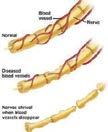
Peripheral Neuropathy is when small blood vessels in the hands, arms, feet or legs become diseased and tiny nerves that keep the cells and muscles working properly shrivel up and die.
Early-warning symptoms include tingling and numbness, mild loss of feeling in your hands, arms, legs or feet, inability to feel your feet, which increases your risk of foot-injury and falling
More Advanced Symptoms Include...
Loss of coordination & dexterity, which puts you at increased risk of accidents
Inability to feel clothing like socks and gloves
High risk of falling, which makes walking dangerous, and makes you more dependent on others
Burning sensations in your arms, legs, hands or feet that may start mild, but as nerves and muscles die, may feel like you're being burned by a blow torch.
Ignore the early warning signals long enough and you risk progressive nerve damage leading to muscle wasting, severe pain, loss of balance and a lot of staying at home wishing you didn't hurt
When every step is like walking on hot coals, sitting still may be the only thing you feel like doing But there's little joy in sitting still all day long

Now here's the scary part....
Nerve damage CAUSES cell damage Cell damage SPEEDS UP nerve degeneration
Without treatment this can become a DOWN-WARD SPIRAL that accelerates.
The damage can get worse fast Mild symptoms intensify Slight tingling, numbness or lack of feeling can turn into burning pain.
Before you know it, damage can become so bad you hurt all the time
Unless this downward spiral is stopped and nerves return to proper function - the damage to nerves and cells in the affected area can get so bad your muscles begin to die right along with the nerves and cells. And that sets the stage for weakness, loss of mobility, disability, and dependence on others.
If you have early warning signs of peripheral neuropathy, (tingling &/or numbness, loss of feeling or pain) it's CRITICAL you get proper treatment
It's critical, because with proper treatment the symptoms can often be reversed Without it, you are playing Russian Roulette with your health
Once your nerve loss reaches 85%, odds are there's nothing any doctor can do to help.
The most common method your doctor may recommend to treat neuropathy is prescription drugs

Drugs like Gabapentin, Lyrica, Cymbalta, & Neurontin are often prescribed to manage the pain But, damaged nerves and dying cells do not heal on their own
Pain pills do not restore healthy nerve function. They just mask the pain as the nerves continue to degenerate and cells and muscle continue to die.
Taking endless drugs and suffering terrible side effects that may damage your liver & kidney and create even more problems, is not a reasonable path. You deserve better. Three things must be determined to effectively treat neuropathy 1) What is the underlying cause? 2) How much nerve damage has been sustained? 3) How much treatment your condition will require?
With proper treatment, shriveled blood vessels grow back & nerves can return to proper function How much treatment you may need depends on your condition
At Purvis Chiropractic we do a complete neuropathy sensitivity exam to determine the extent of your nerve damage The exam includes a detailed sensory evaluation, extensive peripheral vascular testing, & a detailed analysis of the findings.
Dr Rob Acord, D C will be offering this complete neuropathy sensitivity exam for $47 This special offer goes away at the end of this month as we have a limited number of exam appointments available
Stop Hurting & Start Healing
Call
















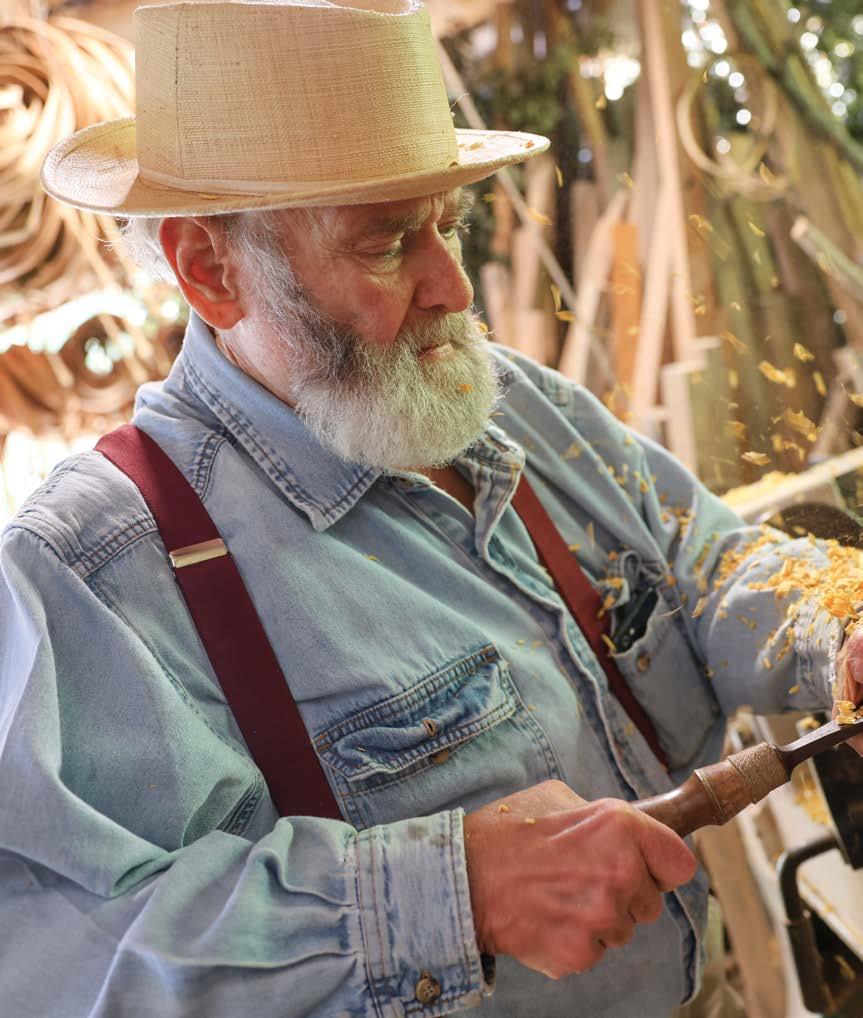
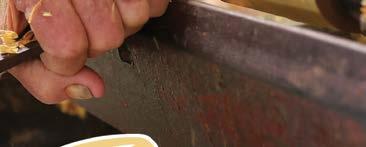


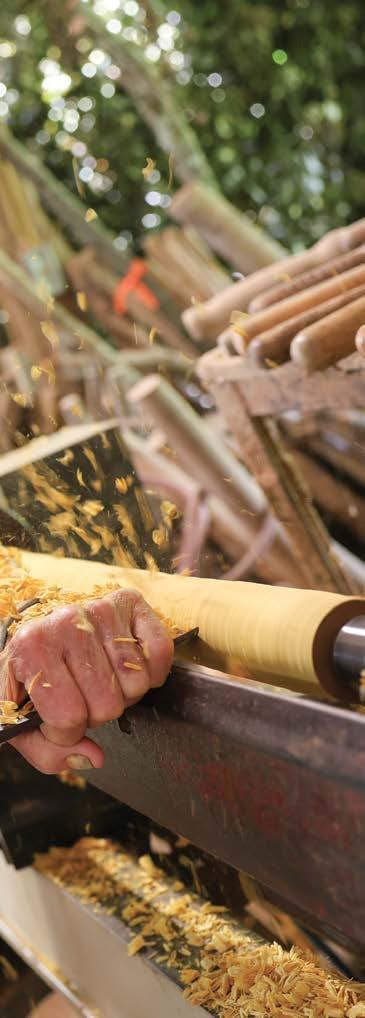
by Steven Ward
Master Craftsman Greg Harkins, who has been making rocking chairs by hand for 50 years, hopes his art doesn’t vanish after he passes.
Virtually no one does it anymore.
“Not enough people are doing it. I can’t find anybody,” Harkins, 73, said recently at his woodshop in Canton.
“I’m always looking for another Hodges,” Harkins said, referring to his 24-year-old apprentice, Hodges Boland.
Boland, a family friend originally from Jackson who grew up in Michigan before moving back to Mississippi, started to work with Harkins four years ago.
Boland built and sold his first rocking chair a year and half ago.
Boland said he learned the rocking chair process from Harkins, plus a whole lot more.
“I’ve learned all kinds of random stu from Greg. What I love about the chairmaking process is the meeting of practicality and art,” Boland said.
Still, Harkins is always on the lookout for “another Hodges.”
“Nobody really understands what I do,” Harkins said.
Sometimes I was working 18-hour days. No way I could have done that without my work ethic. It was in my blood. You also must love it.
He’s always hoping to change that, either through 5-day classes he teaches to willing participants or just maybe through the sale of his chairs to the public.
Harkins, a Mississippi native originally from Jackson, is world famous for his rocking chairs.
He has made and sold his chairs to residents of more than 35 countries and sold “multiple chairs to people in every state in the union,” he said.
He’s made chairs for five former presidents — Jimmy Carter, Ronald Reagan, George H. W. Bush, Bill Clinton, and George W. Bush — and President Donald Trump. He also made a chair for Pope John Paul II.
He signs and dates each chair, which run in price from $1,500 to $3,500. He makes his chairs with oak, walnut, and bodock wood, which is yellow and slowly transforms over the years into a mahogany-type color.
Harkins picks out the trees, has them cut down, peels the bark o the hickory logs, uses a sawmill to cut them, whittles them down, builds the frame, hand weaves the backs and bottoms with the cut tree bark, builds the arms and rocker, puts pegs in, sands them, assembles them, and then creates the finish.
Today, he can build one to two chairs a week. When he was younger and had more help, he made about 15 a week.
Like Boland learning the craft from Harkins, Harkins was an apprentice to Mississippi woodworker Tom Bell. Bell, based in Thomastown in Leake County, worked with Harkins for about a year and half in the early 1980s following Harkins’ time at Mississippi State where he earned a degree in psychology.
“I didn’t make much money back then, about $30 a week. He would fill my tank up,” Harkins said.
Harkins said Tom’s wife, Mabel Bell, kept him fed in those days, with both food and good stories.
Although he worked with seven di erent woodworkers when he was younger, Harkins said Bell was the teacher who pulled everything together for him in the end.
“Each man had a di erent slant on it (woodworking), but the common thread was chairs. And Tommy Bell was fantastic,” Harkins said. He also said the other craftsmen he worked with all though Bell was the best around.
Harkins said making rocking chairs by hand is hard work, and he couldn’t do it without the work ethic passed down to him from his father and grandfather.
“Sometimes I was working 18-hour days. No way I could have done that without my work ethic. It was in my blood. You also must love it,” Harkins said. Harkins, who called himself “sentimental and tender,” has fond memories of all his grandparents, including his paternal grandmother, Thelma Harkins, who he called “Nanny.”
Harkins has a walnut rocking chair given to him by Thelma Harkins, a chair that is 125 years old and has been used by seven generations of his family.
“You can look at the chair and see that there’s not an error in it.”
Harkins said he spent a lot of time at Thelma Harkins’ farm in Leake County when he was young.
“We would be in her chicken yard and sitting on the tree stump where that chair was made. And she would just tell me these wonderful stories again and again,” Harkins said.
Harkins’ national reputation as a chair maker is “staggering,” he said. But it’s hard for him to see himself in that light.
“I’m not anybody but me. I’m not Superman. I’m just me,” he said.
Harkins said he seems to sell more chairs to people outside of his home state.
Harkins said he was once at a crafts show in Dallas when a man came up to him, complimented him on his chairs, and said he wanted to buy four of them.
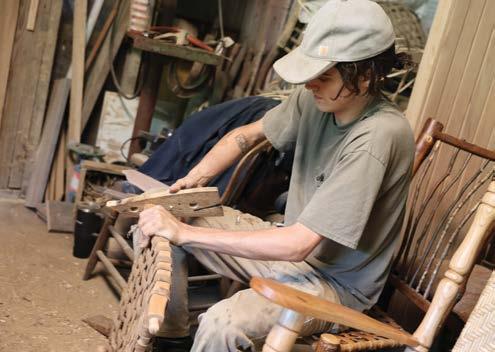

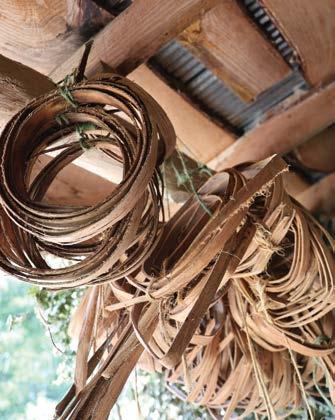



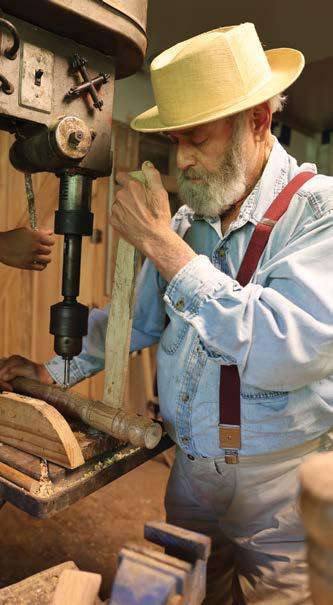





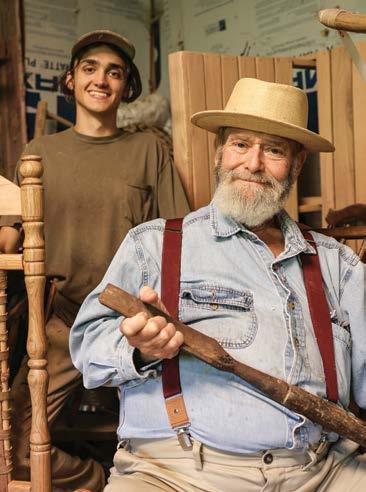







“The man told me, ‘We have nice chairs in Mississippi, but nothing like this.’ I asked him if he was from Mississippi. He said he was from Durant. I told him I lived in Vaughn. He was shocked,” Harkins said laughing.
Although his home and shop were based in Vaughn for years, he now owns about 80 acres in Canton, where he lives and works today.
Harkins is fan of birds.
The space between his house and woodshop is spotted by cages with multi-colored Chinese pheasants, as well as chickens, pigeons, and other kinds of birds.
“Aren’t they beautiful,” Harkins said looking at one of the Chinese pheasants.
Harkins said he plans to use a former Catholic church on his property to open a school — the St. Anne’s School of Arts and Crafts.
The church was built by the Harkins family as a log church and rebuilt as a brick church before it was dedicated to the Catholic Church.
As for Boland, Harkins will be leaving his materials and tools to his apprentice.
“Hodges is a dream come true. Tom Bell was frantic to find someone to carry on his legacy, and now I understand why,” Harkins said.
“I would like to leave him with about 100 orders. That will give him work for a long time.”
Having said that, Harkins isn’t planning on retiring exactly.
“I should have stopped a couple of years ago. But I have such a love for this. I will keep on building these chairs until I die.”
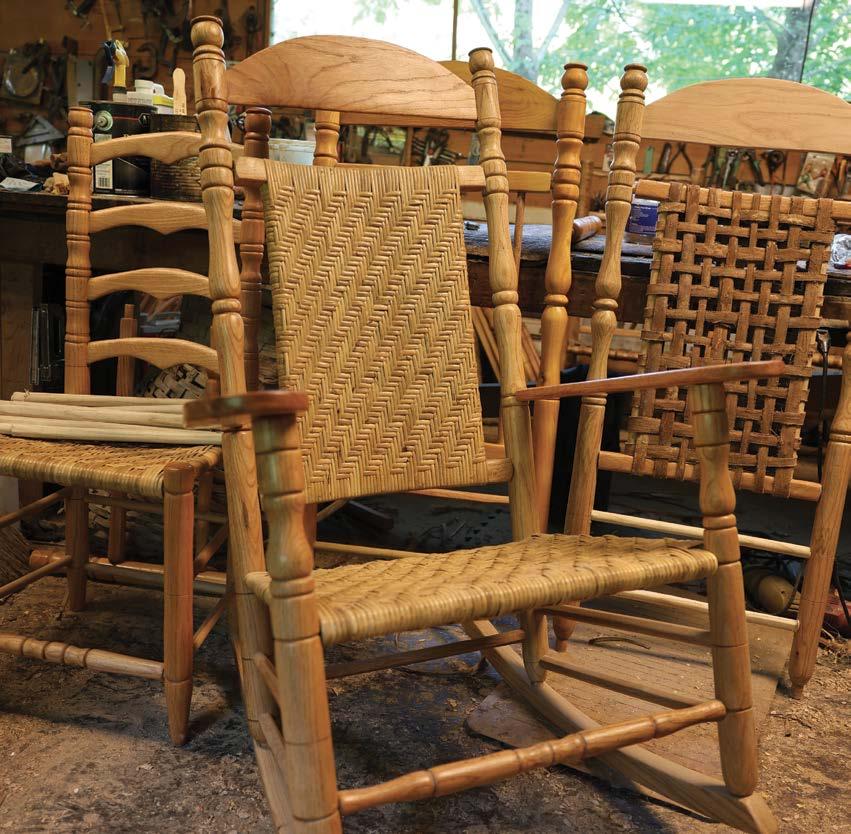








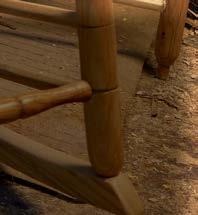


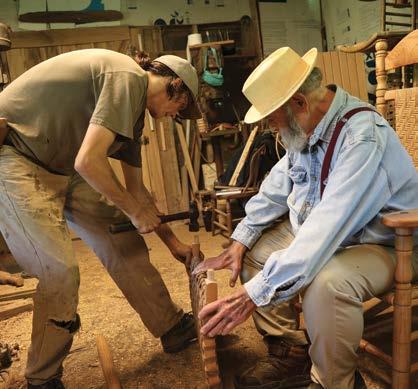






































































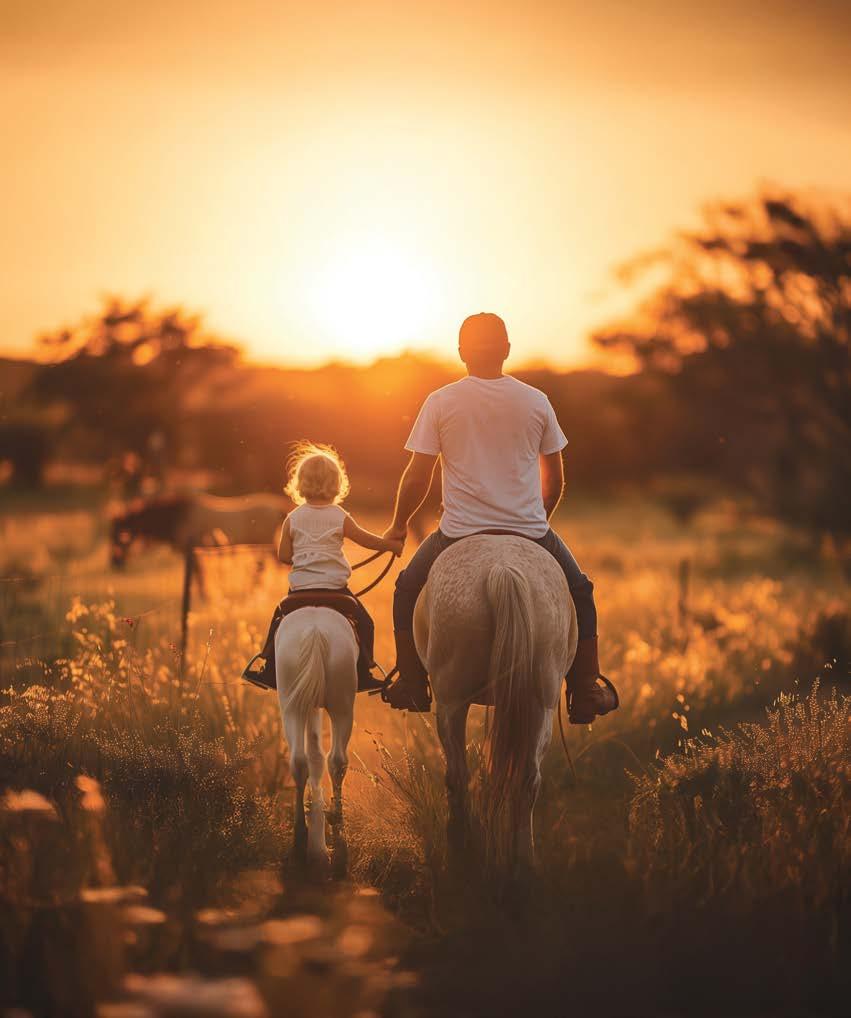

Send us a photo of your horses or the horses you and your family ride. Maybe your kids or grandkids have taken pony rides. Send us their photos. The photos must be high-resolution JPG files of at least 1 MB in size. Please send the photo as an attachment to an email and send it to news@ecm.coop.
Each entry must be accompanied by photographer or sender’s name, address, and co-op.
SUBMISSION DEADLINE: Sept. 2. Select photos will appear in the October 2025 issue.








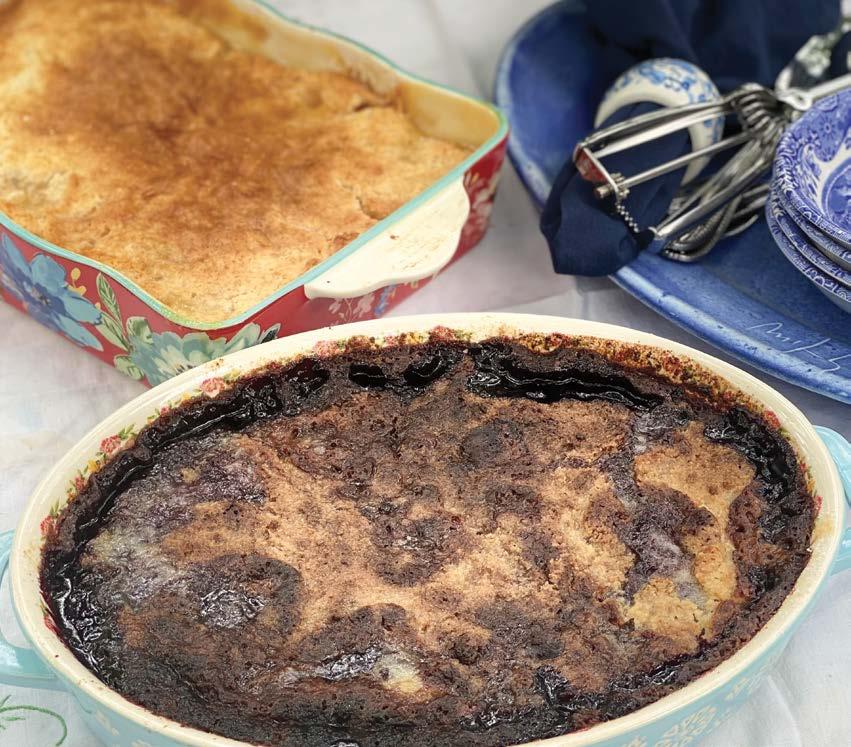






Once upon a time in a land of sweet tea and sweltering temperatures, blackberries would grow alongside winding back roads in remote areas of the country, close to where I grew up. People would drive out into the wilderness, clad in fishing boots and carrying 5-gallon buckets, with one mission in mind: fill up the bucket with blackberries. And, if by chance said ‘people’ was my mom, we — my brothers and me — would be invited to tag along. Smelling of Avon Skin-So-Soft and DDT, we’d busy ourselves picking berries. Wild blackberries didn’t grow in rows, and I can’t tell you how many times I got my ponytail tangled up in a bush. The work wasn’t for the faint of heart. We’d pick some, eat a few, and I’d be fine until she’d say something motherly like, “rattlesnakes like blackberries, too, so y’all be careful where you step.” (I’ve come to
learn that she lied when she said that) But, when we were done — covered with splinters, fingers stained with inky juice, and eaten up with chiggers — we’d head home to a Clorox bath and a nice early bedtime.
I have fond memories of all the things made from our summer’s pickings — jams, jellies, preserves, and cobblers. The memories of those summer activities are just as sweet as the foods that went along with them. Sitting under my maw maw’s peach trees shucking corn was about my least favorite thing to do, but the peaches those trees put out were the sweetest I’ve ever tasted.
Summer’s bounty should be enjoyed. Pick a few berries. Buy a few peaches. Make a cobbler or two. Use these recipes if you don’t have your own, and thank the good Lord that you don’t have to dodge rattlesnakes or briar bushes to put something delightful on your table!
Serves 8
2 pounds frozen blackberries (2 1-pound bags)
1 ½ cups granulated sugar
2 cups water
1 cup self-rising flour
1 cup granulated sugar
1 stick cold butter
The filling might be a little thin for your taste when it’s piping hot out of the oven. We’re OK with that, but to thicken the mixture a bit, mix 2 tablespoons of cornstarch with 2 tablespoons of water and stir into the berries while they are boiling. Remember, as the cobbler cools, the fruit will thicken a little more.
Heat frozen berries with sugar in a 4-quart saucepot until the berries begin to thaw a bit and the sugar begins to melt, stirring as they come to a boil (about 5 minutes). Add 2 cups of water and bring back to a boil. Cook for about 10 minutes. There will be about twice the amount of liquid as berries at this point. Pour into a well-sprayed 2-quart casserole dish.
Combine flour, sugar, and butter in a medium bowl, cutting in the cold butter with a pastry blender (use your fingers or a fork if you don’t have one). Butter should be in pea sized or smaller pieces, and the mixture will be crumbly. Sprinkle this mixture evenly over the hot berries in the casserole dish. Place dish on a foil lined pan. Plan on it bubbling over. Bake at 350 degrees for 25-30 minutes. Top will be crusty and browned.


1 stick butter
1 cup milk
1 cup granulated sugar
1 cup self-rising flour
2 29-ounce cans sliced peaches, drained slightly and chopped up a bit
½ cup granulated sugar
1 teaspoon vanilla
Preheat oven to 350 degrees. Melt the stick of butter in a 2-quart casserole dish. Remove from oven. Mix together the milk, 1 cup of sugar, and flour with a whisk in a bowl. Pour into the melted butter. Don’t mix, but using a knife, swirl the batter around in the butter just to distribute a bit.
Stir the ½ cup sugar and vanilla into peaches. Pour peaches into the pan of batter. DON’T MIX. Bake for 40 minutes until hot and bubbly, and the top is browned.
Makes 12-16 servings
This is Peach Cobbler that resembles a dump cake. This one creates a nice fluffy, cake-like crust around and on top of the peaches. A touch more liquid in the peaches can make it a bit juicier. Substitute other fruits if you like. Using about 8 cups of frozen peaches will work. Increase sugar to at least a cup. Fresh peaches are always the very best for cobblers. A heaping 4 cups of sliced peaches with about 1 ½ cups of sugar will work.

by Vicki Leach
Vicki Leach is a full-time chef/culinary instructor at Mississippi State University in the Department of Food Science, Nutrition, and Health Promotion. She teaches Science of Food Preparation, Foodservice Organization, and Quantity Food Production. She lives in a 130-year-old farmhouse that speaks to her old soul.
Events open to the public will be published free of charge as space allows. Submit details at least two months prior to the event date. Submissions must include a phone number with area code for publication. Email to news@ecm.coop. Events are subject to change.
Frost Bridge Camp Meeting. July 18-27. Waynesboro. The camp is located at 1455 Matherville Frost Bridge Road. The camp is a Bible-based family camp that meets once a year. Very reasonable rates for dining hall meals, boys’ and girls’ dorms, and newly remodeled hotel rooms for adults. Join us for service or come stay the whole week. Bible study daily at 9 a.m. in small groups for all ages. Morning worship begins at 10:30 a.m. and evening worship starts at 7 p.m. We have music led by the Isbell Family and enlightening preaching by nationally known evangelists, Rev. Friedeman and Rev. Womack. Youth rate to stay the entire 10 days is only $200. Hotel rooms beginning at $25 a night and RV with full hookups for $25 per day. Details: 205-292-9176 or visit frostbridgecamp.com.
Magnolia State Bluegrass Association Summer Show. July 19. Mathiston. From 1 p.m. to 7 p.m. at the Sherwood Community Center, 23E Sherwood OCL Rd. Concessions in site. Bring a chair. $15 a ticket. Free for members, Children 12 and under with an adult get in free. Details: 601-527-9127 or visit MSBAmusic.com.
The 10th Clarke County Chamber of Commerce River Fun Run. July 26. Desoto to Quitman. Bring kayaks, canoes, or flat bottom boats to paddle the Chickasawhay River from Desoto to Quitman. Children must be accompanied by an adult. The entry fee is $35 which includes a t-shirt, lunch, and prizes. Details: 601-776-5701.




The Calhoun County Sacred Harp Convention. Aug. 9 Vardaman. The event will be hosted at Mt. Herman Primitive Baptist Church 163 County Rd 427 (Hollis Switch Road), approximately 3 miles west of Vardaman. Singing starts at 10 a.m. with lunch in the fellowship hall at noon. Adopted tune books for this singing are the 1991 Sacred Harp and the 1911 Sacred Harp (J.L. White Edition). Details: 662-507-9434.
The Mississippi Sacred Harp State Convention. Aug 23 and 24. Forest. This event will be hosted at Antioch Primitive Baptist Church, 6931 Miss. Highway 21, about 6 miles north of Forest. Singing begins at 10 a.m. on both days. Adopted song books are the 1991 Sacred Harp, B.F. White Sacred Harp (Cooper Book), 2010 Christian Harmony, and the 1911 Sacred Harp (J.L. White Edition). Details: 601-940-1612 or email marksdavi19@gmail.com.
Harrisville Day. Sept. 27. Harrisville. The event will be held at 1767 Harrisville Community Park. Fun, food, games, music, bounce houses, vendors and car show. Firefighters will be cooking barbecue. The event starts at 8 a.m. Details: 624-927-0445 or 601-942-1480.
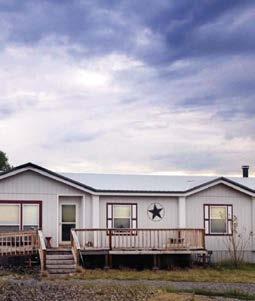






































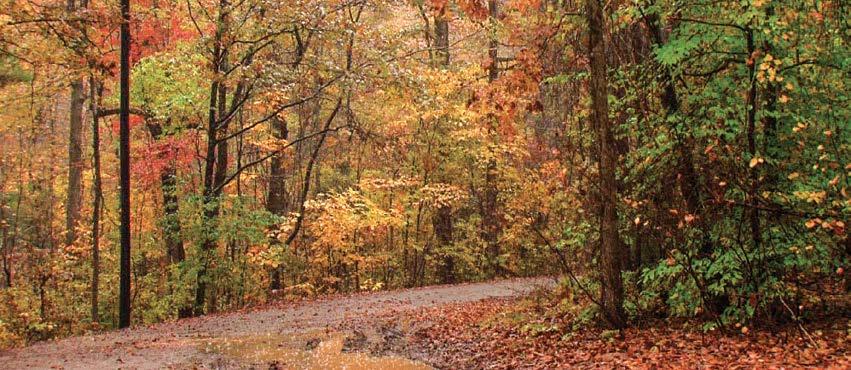





The three of us were riding together on our way back from doing a live half hour “Your Home Town” episode in Brookhaven for our “Daily Sip at 3:30” show on WJTV. My co-host, Ken South, was one of my passengers along with our producer, Zach Mason. Both Ken and I have done television shows going around the state showing what we’ve seen. Ken’s segment, “South Bound” ran for many seasons on WJTV. I host “Mississippi Roads” on Mississippi Public Broadcasting. So, Ken and I were comparing notes on places we have been.
I am really fond of Tishomingo State Park. The old Civilian Conservation Corps cabins remind me of a past I never experienced, except in stories the “old folks” told after supper at Grandma’s house in Fulton.
We sort of dwelled on northeast Mississippi for a while — Corinth, Iuka, J.P. Coleman, and Tishomingo State Parks. Ken remembered Borroum Drugs in Corinth and the slug burgers. I remembered the Old Courthouse Museum in Iuka. It houses lots of family records and census data along with artifacts. I did a story there several years ago. When I’m in an old building, I sometimes ask, more or less as a joke, is it haunted? The genealogist I was interviewing told me, “No. I’ve never seen a ghost. But if I did, I’d probably ask him who his grandfather was.”
I am really fond of Tishomingo State Park. The old Civilian Conservation Corps cabins —built during the Great Depression — remind me of a past I never experienced, except in stories the “old folks” told after supper at Grandma’s house in Fulton. The stories were about our pioneer ancestors who settled in that part of the country. I particularly like to slip up that way in fall or winter. Usually there aren’t so many other people around that time of year, and I can build a wood fire in the fireplace.
I guess I should have told Ken about one of our summer stays at Tishomingo. That was when Miz Jo taught me to cuss.
We were shooting several days’ worth of “Mississippi Roads” shows in that area. Instead of getting a motel room, I got us five nights in one of the old cabins at Tishomingo State Park. The first day we shot our story in whatever town it was, and then, Jo and I headed to the peace and quiet of the park. That night was wonderful. There was no television and no cell phones, just the breeze on the screen porch and the crickets.
The second day we feverishly shot two shows because bad weather was coming later in the week. I was looking forward to the cabin that night. No television, no telephone, just the breeze and the crickets.


The third day we dutifully did our filming for another show, and Jo and I headed back to Tishomingo Park to the cabin, the side porch, the evening breeze with no television, no telephones, just the crickets.
That’s when Jo said, “If I hear one more d - - n cricket!” She never said exactly what she’d do. I knew better than to ask.
So, I put her in the car and took her to the Walmart in Iuka, so she’d feel more at home.

by Walt Grayson
Walt Grayson is the host of “Mississippi Roads” on Mississippi Public Broadcasting television and the author of two “Looking Around Mississippi” books and “Oh! That Reminds Me: More Mississippi Homegrown Stories.” Walt is also a reporter and 4 p.m. news anchor at WJTV in Jackson. He lives in Brandon and is a Central Electric member. Contact him at walt@waltgrayson.com.



























































































